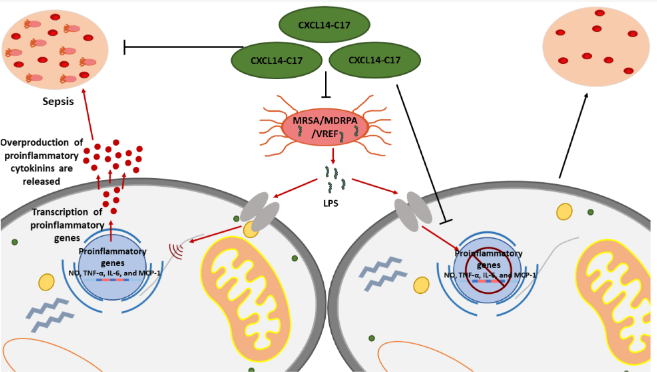💡 This paper discusses the evolution of infectious diseases in resisting conventional antibiotics, underscoring the need for novel antimicrobial agents such as antimicrobial peptides.
📍 The authors conducted an extensive review of recent research and literature on AMPs. Different synthesis techniques of AMPs, such as solid-phase peptide synthesis, biological method, enzymatic hydrolysis, and microbial fermentation are detailed. Peptide synthesis was characterized using varying techniques, including database retrieval for AMPs with broad-spectrum antibacterial and anti-inflammatory actions. Information from the Antimicrobial Peptide Database was also called upon.
📌 Antimicrobial peptides possess advantages over traditional antibiotics, such as slower development of resistance and the ability to control host immune systems.
📍 AMPs also have significant anti-inflammatory properties.
📍 Challenges persist in the delivery of AMPs into tissues, their potential cytotoxicity, and issues with antimicrobial resistance.
📍 Changing the peptide sequences of AMPs can increase their effectiveness against a broad range of bacterial and cancerous cell membranes.
📍 D-amino acid substitution at the protease cleavage site of AMPs may reduce AMPs’ cytotoxicity to healthy cells and improve their antimicrobial properties.
📍 AMPs have the potential to be effective against biofilm-associated infections, penetrating the biofilm matrix and interacting with microbial cells.
📍 AMPs can potentiate the activity of antibiotics by permeabilizing the biofilm matrix, enabling better penetration of antimicrobial agents.
📍 Despite several underlying challenges, AMPs show promising potential as a novel source of drug development for treating human ailments.
📌 This review conveys the significant potential of antimicrobial peptides as potent alternatives to conventional antibiotics. With unique advantages such as a broad spectrum of activity and slower development of resistance, AMPs present a promising direction for future antibiotic research and development.
However, certain challenges persist, particularly relating to delivery into tissues, potential cytotoxicity, and issues with antimicrobial resistance. Nonetheless, ongoing research and technological advances hold the promise of overcoming such barriers and accelerating the clinical translation of AMPs. The development of novel AMPs capable of overcoming these challenges could revolutionize the treatment of microbial infections and other diseases.
Link to the article : https://tinyurl.com/2p93y8ue
